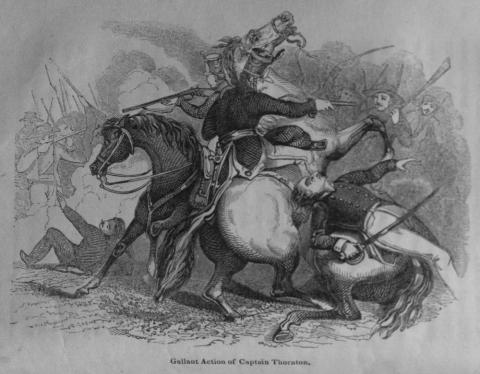In June 1845, the War Department ordered General Zachary Taylor, commander of a force of 1,500 stationed at Fort Jesup in western Louisiana, to protect the South Texas frontier. Although the U.S. annexation of Texas would not be approved by voters of the Lone Star republic until July 4, Mexico still claimed Texas as its own, and its leaders had repeatedly warned that annexation would be a possible cause of war.
By the end of July, Taylor’s “Army of Observation” had arrived in Texas by land and sea routes, taking up positions at Corpus Christi, on the south bank of the Nueces River. From the viewpoint of Mexican leaders, this was a further act of provocation, since Mexico had long recognized the Nueces, not the Rio Grande, as the southern boundary of Texas. For nine months the army remained in Corpus Christi while Taylor trained his army and waited for reinforcements. In response to rumors of war preparations on the part of the Mexican government, U.S. Secretary of War William Marcy ordered Taylor to move his army to the mouth of the Rio Grande. While the U.S. commander was told to remain on the defensive, he was also given instructions to repel with force any attempt by Mexican troops to cross the river.
In late March, 1846, Taylor marched south at the head of an army numbering almost 4,000. On April 25, Mexican troops crossed the Rio Grande and attacked a patrol of U.S. dragoons, a clash which would prompt President Polk to declare that a state of war existed between the two countries. Two U.S. victories at Palo Alto and Resaca de la Palma soon followed. During the summer of 1846, Taylor’s force, now known as the Army of Occupation, would take control of several Mexican towns along the Rio Grande, as it prepared a campaign into Mexico’s northern departments.




